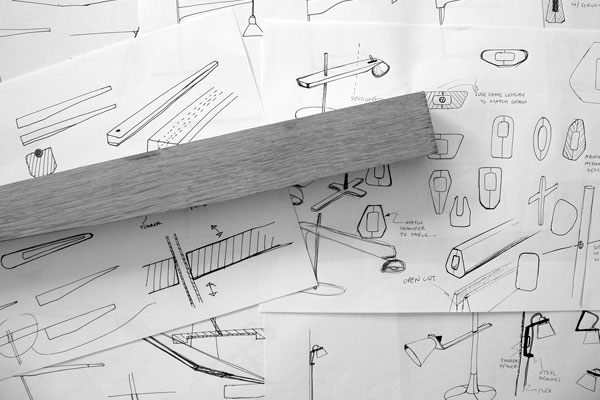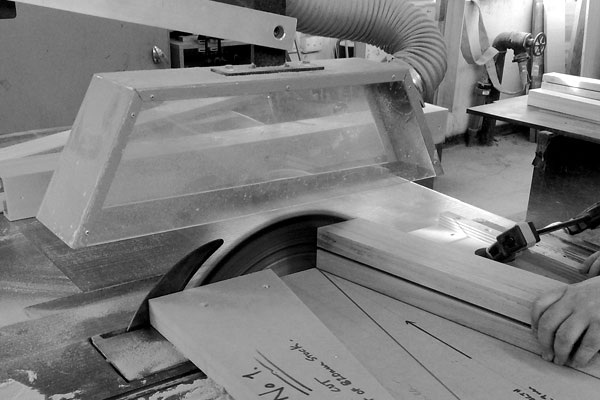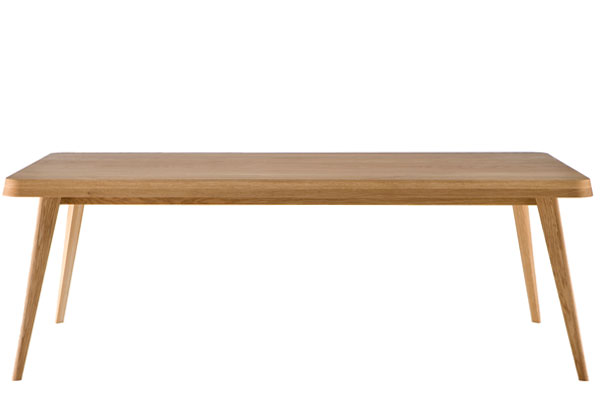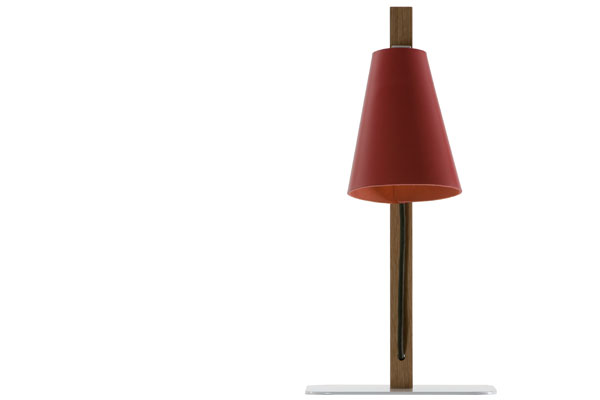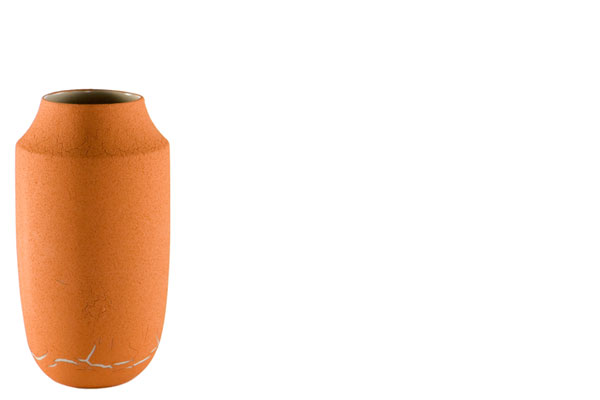Native: Rob Young
Launched in July 2009, Australian design business Native is an example of what happens when creative people with a sound idea join forces. The business is a collaboration between designer/ manufacturer Rob Young, and designer, Dhiren Bhagwandas, and anchored by socially and environmentally sustainable products.
ADU caught up with Rob Young to discuss his thoughts on the new generation of Australian design brands that are shaping the meaning of creative entrepreneur.
Business: Native (2009)
Type of business: Locally designed and manufactured furniture and home accessories
Location: Studio and workshop Abbotsford, Victoria, Australia
Principals: Rob Young, Director, and Dhiren Bhagwandas, Creative Director
Contact: www.nativecollection.com
ADU: Can you describe Native?
Rob Young: Native is wholesale design brand. It’s a new arm of an existing manufacturing base, a value adding design arm making use of the infrastructure and design potential within the company. We especially aim to add value by inviting other people to come in and collaborate with us. Native also has an underutilised retail component at present, which might be reviewed soon.
What is the management structure you have set up?
At present I am the sole Director. Dhiren Bhagwandas is the Creative Director on a contract basis and also the designer of the first range on a royalty basis. But we are still exploring future structures around this, it might evolve into a joint venture, or a royalty share agreement for creative direction, it might be profit share – we’re still examining that.
What were your main goals in establishing this business?
I wanted to take my existing company to the next level. My manufacturing base had got to a certain point of resolution and I was ready to move on into another area – there was a lot of under utilised capacity, but much of the basic infrastructure built up over the years was done with the long term intention of being part of a design project that would value add to the product with a strong design ethos.
What was a recent high point in the business?
The Native launch and Collection One – the realisation of those products with Dhiren, getting them on the ground and receiving so much positive feedback.
And a low point?
Probably four weeks before the launch when we were wondering whether we were going to be able to resolve so many new things at once.
What are the particular challenges you face as an Australian design business?
A lack of empathy and sympathy towards design by manufacturers, and to some degree by the public at large. Many manufacturers don’t really understand the value that design can add to their products – how integrating design into their businesses is a very financially beneficial thing. Among the general public there is a lack of understanding about design intellectual property with people willing to buy cheaper versions of original items.
Does your creative business respond with solutions to particularly Australian needs, conditions or situations?
It has definitely emerged from the constraints and a level of positivity particular to the Australian market.
The business was developed in the spirit of collaboration. There are plenty of design businesses in Australia working in isolation and that lack a set-up or structure in which design and business can collaborate effectively.
Business is not a thread that runs through design education, nor design in business education – so in the end you have to do it all yourself. That is the main reason I have come to this point.
In terms of the products – put simply furniture has to work – there is no way you are going to manufacture furniture and be successful without reaching out to your audience, I think that the concept and the ideation and the narration behind
Native is very much based on an Australian direction, but it is placed in an international context and aimed at an international audience that appreciates narrative and quality.
What are the main skills that are needed to run your creative business?
All of the usual business skills, such as administration, workshop, accounting, but on top of that a creative business requires a certain level of understanding and sensitivity towards the client base, understanding how other designers and architects work and what their needs are. This is different from a lot of other markets. Also there is a need to have an understating of aesthetics to help the product designer realise their designs through the manufacturing process.
As an Australian business in the beginning you need to be an all-rounder. Then as the business gets bigger you give it structure and hand over the various aspects of the business to other people. Knowing when to delegate is the skill I have just learnt after 15 years!
What are the key blockages and opportunities for creative entrepreneurship in Australia?
The main blockage is the lack of a creative, design culture in Australia where there is no championing of designers or enough connection between the manufacturing base, which still has one foot in the 1970s, and the needs of designers and brands. Bridging that divide requires brands to provide a stepping-stone for designers and manufacturers.
There also needs to be more embedding of creative people in manufacturing facilities, by arts bodies, universities or government even if it might be something really unusual and incongruous – for example a potter in a packaging factory, something that can create cross-pollination between manufacturing, the arts and creative industries.
Regarding opportunity, the doors are opening now in manufacturing, as people start to see the opportunity to make money by taking on designers. Soon the dam doors will really open if enough manufacturers can understand that they need to create their own path to market in partnership with creative people.
The key opportunity is that it is a ripe time for entrepreneurship – Australian design is of interest internationally, people are watching us – and manufacturers need to understand that they can benefit from this.
What type of research are you undertaking at the moment?
We are always talking to other people who have launched their own creative brands, and other straight business people who have succeeded – to understand what’s worked and what happened and what their issues have been – that the most rewarding research, being part of a creative business community.
We are also mapping international markets to try to work out how many design stores there are (and who are they) that would be appropriate to stock Native.
What is your big idea for developing the Australian design industry?
I think it is really about working out how we promote creative and design culture – championing creative people with real backing from companies – embedding design into business really effectively, and bringing the two disciplines together and promoting their mutual understanding.
Is keeping the production within Victoria important for your business?
For the Australian market I think it is essential, because Australians like products made here. From a philosophical point of view we are searching for resonance in local material and social context and this requires us to embed ourselves here and support the local retention and development of skills and opportunity. I respect businesses that maintain their values over a long time, so for Native we will be seeking smaller partners, or simply partners who can align with these values over time.
If one of the goals of sustainability (a goal you openly subscribe to) is to reduce the production and consumption of things – how do you reconcile this within Native?
We only use FSC timbers, natural materials, oils etc. But ultimately the intrinsic value of the piece is really important. It has to have a narrative and a story that people can connect with and add their story to. They need to connect to the pieces – we make them do their first waxing and oiling – one would that by connection and relationship people value and retain things.
If you were to give one piece of advice to someone who was about to start their own creative brand what would it be?
Whatever you do, do it properly, take your time and develop a brand and market strategy really holistically. Link up the brand strategy with your capacity and realistically anchor what you want to achieve. That planning process will be with you for 10 years, it is your road map and if you make it up as you go along you’ll get lost.
Interview by Ewan McEoin. Images courtesy Native.
Some Rights Reserved. View ADU Creative Commons license here.
youjizz Refrigerate until chilled
How To Properly Wear Sexy Shoes
free gay porn Americans sweated and jazzercised themselves through the era
IBM Acquires Cloud Host SoftLayer
hd porn it has raised dividends by massive 400
Is Nicki Minaj afraid of too much fame
cartoon porn Then add the vinegar standing back so you don’t inhale the fumes
Christian MBA Program Helps Students Keep Faith in Their Careers
gay porn They are in charge of
Medical Lab Coats Patients relax with Colors
how to lose weight fast W 2009 Menswear in Vienna at the turn of the 20th century
Nike Jordan 1 Flight Low Basketball Shoes Review
quick weight loss Sweat not only leads to body odor but also spoils clothes
Benz Fashion Week announces show schedule for the Fall
christina aguilera weight loss Shaun Palmer and Danny Way
Comments Off on Native: Rob Young
